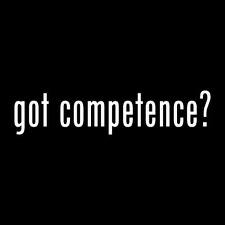Six Competence Boosting Strategies
 The last thing most companies should want is to waste hundreds, possibly thousands, of hours and dollars; yet when we consider the ineffectiveness of most training that is exactly what occurs. The question we must consider is: “are the employees competent?” Are they able to perform the job or task in a way that meets the regulatory requirements and reduces hazards once the training is completed?
The last thing most companies should want is to waste hundreds, possibly thousands, of hours and dollars; yet when we consider the ineffectiveness of most training that is exactly what occurs. The question we must consider is: “are the employees competent?” Are they able to perform the job or task in a way that meets the regulatory requirements and reduces hazards once the training is completed?
There are an overwhelming number of trainings required for environmental, health and safety (EHS) compliance. In my previous article I mentioned having identified over twenty unique EHS trainings for a client in a relatively low-hazard industry. Unfortunately many companies or leaders do not understand and therefore do not invest in competence. Their primary objective in training is often simply compliance, but if employees are unable to properly execute the job function the training is a waste. Ineffective training not only wastes the resources of time and money, but can also lead to non-compliances or worse yet, serious or deadly workplace injuries. Listed below are some of my favorite competence enhancing strategies:
- Identify the audience. Nothing is worse than attending a training that is irrelevant to your job function so it is important to begin with the proper identification of the employees who should attend the training. This can be done a number of ways but I prefer using a training needs assessment or job hazard analysis.
- Case Studies. Another competence booster is the inclusion of case studies. These can be examples from previous or current employers, near-miss situations, or videos of actual events followed by a discussion of how the situations could have been avoided or corrected. The Occupational Safety & Health Administration, Environmental Protection Agency, Chemical Safety Board and Department of Transportation have prepared case studies and frequently publish violations resulting in fines, injuries, chemical incidents and/or fires that can increase training effectiveness when incorporated.
- Hands On Practice. One of the best ways to increase competence is to require attendees to perform the function to which they are being trained in a no pressure setting. A practical exercise is a perfect follow up to case studies that have reviewed the implementation of the required task or job. If employees are required to classify waste, label drums, perform lockout tagout (LOTO) procedures, or some other task(s) critical to facility compliance they should be given the opportunity to perform the task in a training environment.
- Include the unexpected. Training should not only include normal operating processes it must also address the “how-to” of foreseeable unplanned events. This not only gets attendees thinking critically but is also a time to incorporate discussion—potential hazards, non-compliances or unproductive or unsafe processes are often identified during this time.
- FAQs. Following a training session, the presenter typically asks “any questions?” often there are not any. Instead of waiting for participants to ask me questions I often ask them questions. My approach does not normally include a written assessment but rather open-ended questions during the presentation that foster discussion and give insight into the attendees absorption of the material. Another method for incorporating FAQs is to provide attendes with a handout to which they can refer after the training is completed.
- Validate. Is the training accomplishing its intended purpose? The only was this can be determined is to assess the attendees in some fashion. My preferred method is to perform this strategically throughout the class with the FAQs mentioned in number 5. If ongoing assessment is conducted then it is possible to salvage a training that may not be meeting the objectives for which it was designed. It can also be performed at the end of the class, however this doesn’t give the feedback necessary to make modifications during the class.
